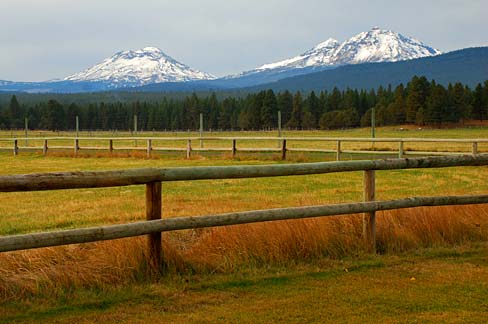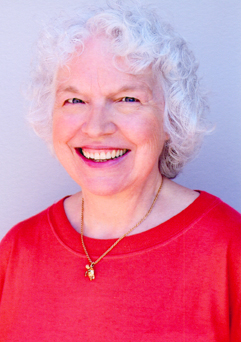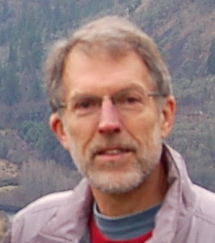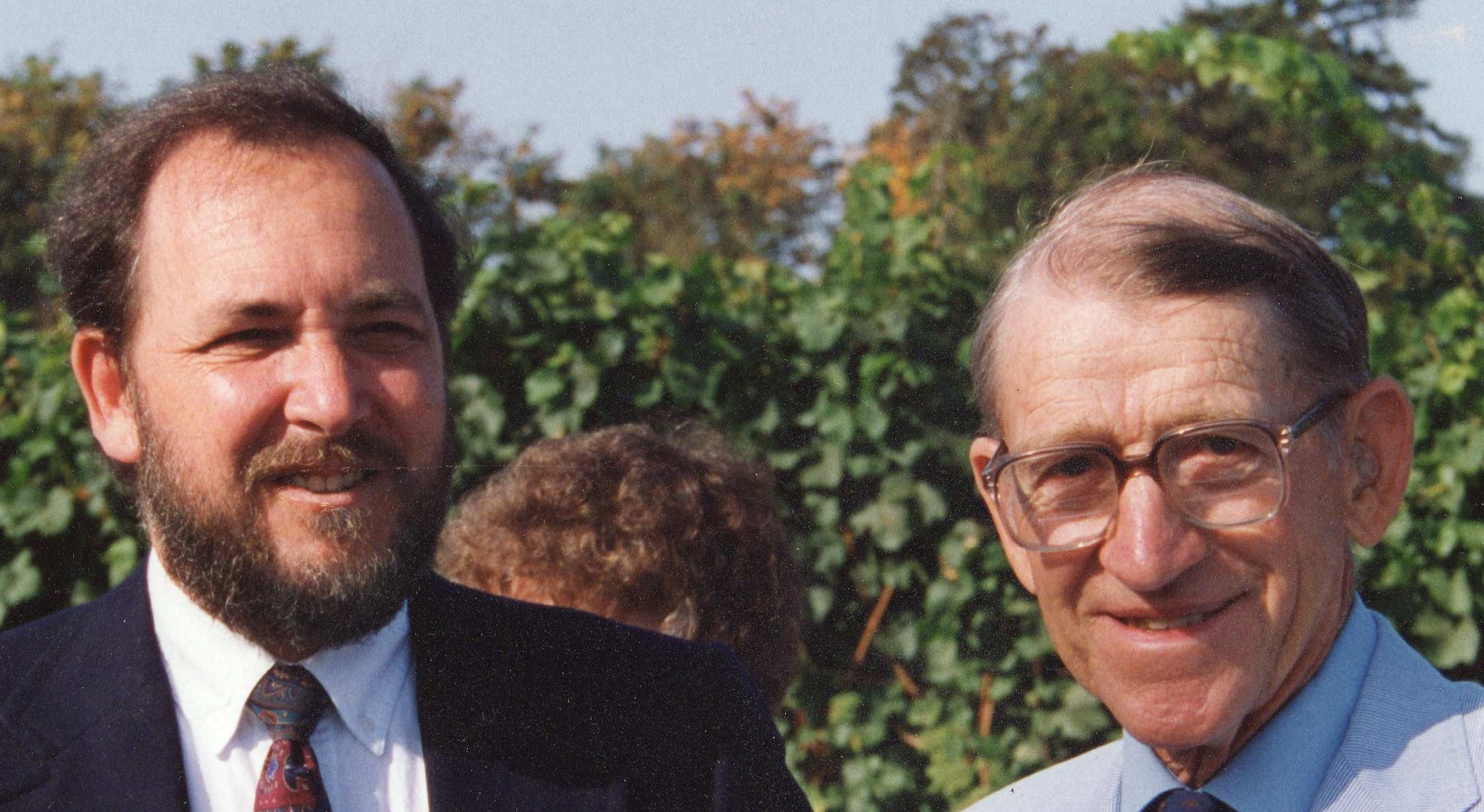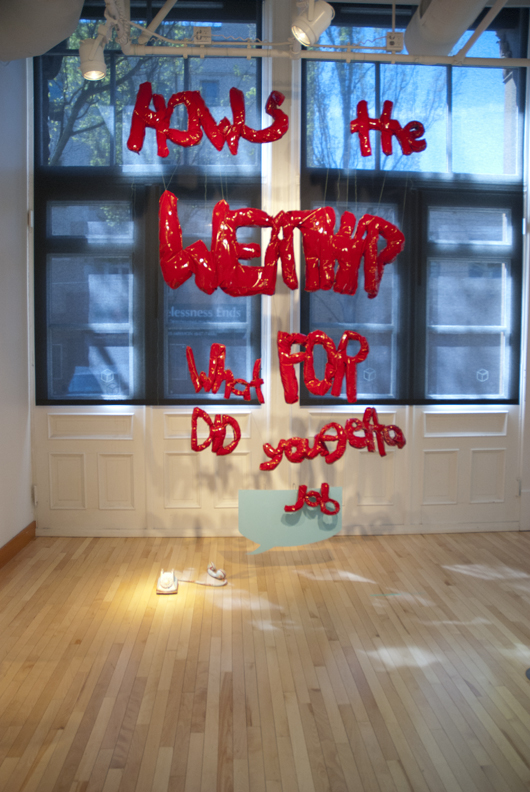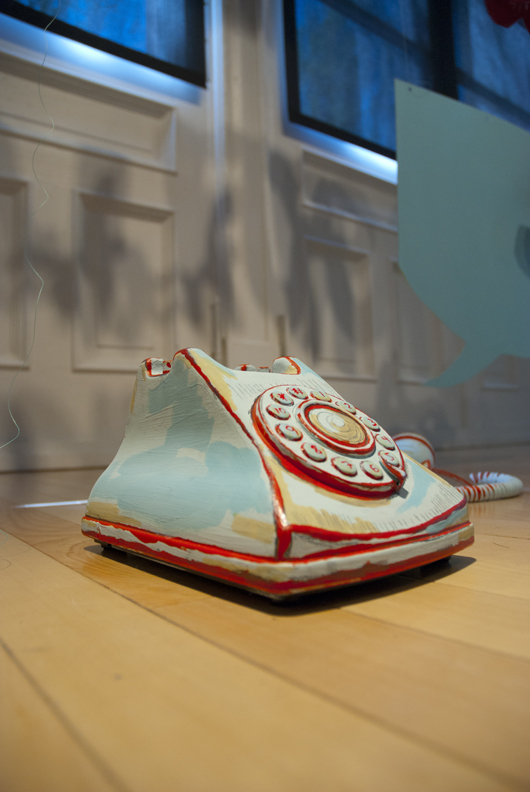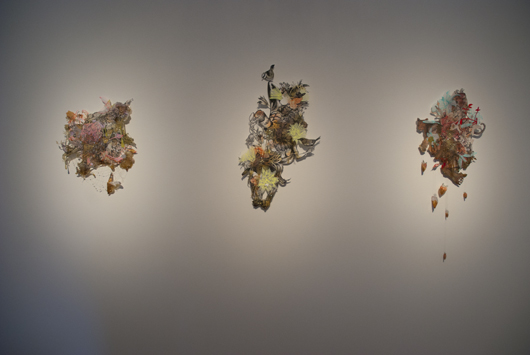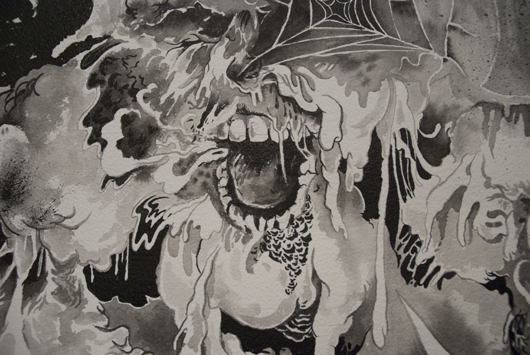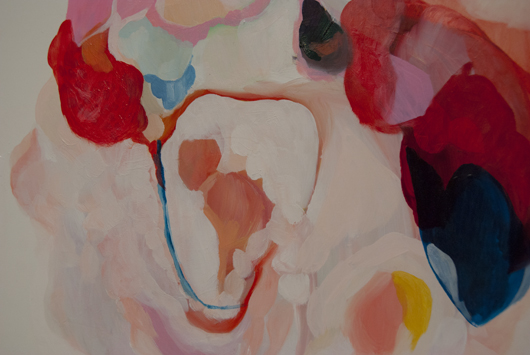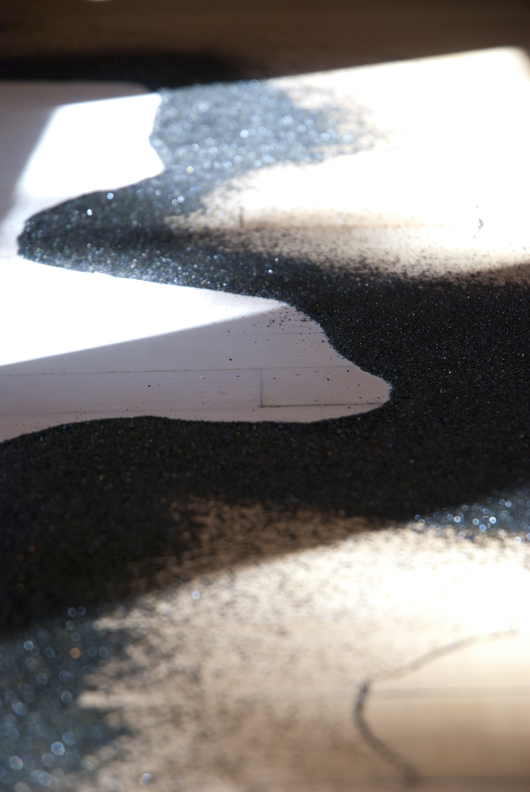Taking A Place in Front of the Public Eye:
2013 MFA Work at Disjecta in Portland

Disjecta is a space where one almost has come to expect a certain élan to the work exhibited. It is a place where a stage of discussion and dialogue is consistently and comfortably set; where the democracy of exhibit, the inspiration of collaboration, and the articulation of idea is given a sphere accessible to public exploration and appreciation. The exhibitions at Disjecta find a realness to their communication delivering works of art to the public with an understanding of the requisite of flow and of quiet observation.
Into this healthy environment of engagement, the 2013 MFA candidates brought the work that would bind them forever to the award of their Master of Fine Arts degree, the exhibition Speaking Between. Mirroring the global focus of the Art Department faculty who are internationally exhibited artists, and complementing the extensive and consistent outreach of the program, which brings internationally recognized artists to the Eugene campus to work directly with the students, the Portland exhibition engages with Oregon’s most globally-recognized metropolis.
Choosing to collaborate with Disjecta for this exhibition and hosting a public reception, the UO Department of Art faculty delivered the student work to a place well-recognized and highly respected in the Portland art context. Disjecta offered a gallery where the MFA students would be thrust into the saturated world of experienced gallerists and the well-trained eye of some of Portland’s most highly respected curators and critics, not to mention a public that dearly loves its art exhibits.
Oregon ArtsWatch writer, Patrick Collier, explained the relevance of the MFA exhibit and exposing the student work to a new community:
In many ways, MFA candidates find themselves between two worlds. As students they are engaged in a somewhat closed dialogue with their mentors while at the same time they are trying to develop their own voice. Having seen very many graduating MFA exhibits over the last twenty years, I can often tell when that conversation favors the teacher’s way of approaching the world more than how the young artist has begun to interpret it. The diversity of work and level of sophistication presented in “Speaking Between” suggests that UO’s Art Department faculty has sufficiently prepared their students for the next step in their education, which is to make art on their own and thereby continue the conversation with a larger audience. After all, this is the purpose of such a show, to introduce these students to their new community.
As Collier notes, “[introducing] these students to their new community” has benefits that far surpass the immediate — effectively catapulting the newly anointed artist into the world at large. Such opportunities for exchange and recognition are greatly appreciated by the students. Wendi Michelle Turchan comments,
I was very excited about having the show at Disjecta in Portland. It was a great opportunity to have larger visibility for my work and I thought the turnout at the opening was amazing. It was a great chance to meet new people and talk with them about myself and my work.
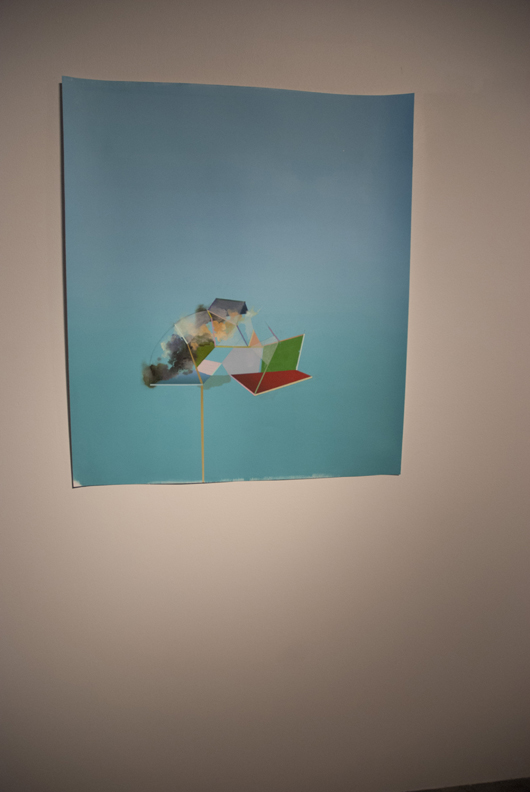
Student Ian Clark remarks,
[Showing] our work in a space like Disjecta is wonderful. It is a beautiful space, and it has garned a reputation for organizing interesting shows. Portland itself is becoming more and more recognized as a legitimate place for artists to live and work, so it’s nice to be a part of that. . . .

Responsive to the occasion was also student, Meg Branlund, confirming:
Having the opportunity to exhibit our thesis work in Portland has been amazing. Being in the small community of Eugene for the last three years, I constantly find myself making the trek up to Portland to be able to see and experience facets of the larger Northwest art scene, things like TBA, lectures at Reed College, and gallery and museum exhibitions. So, to be able to show work directly within this community at Disjecta is something that is great for the visibility of the MFA program overall, and for us as individual artists. It feels like I am able to participate in, and contribute to the greater Oregon art scene, and that feels great….to know that my work reaches a larger audience than it would had the exhibition been held in Eugene.
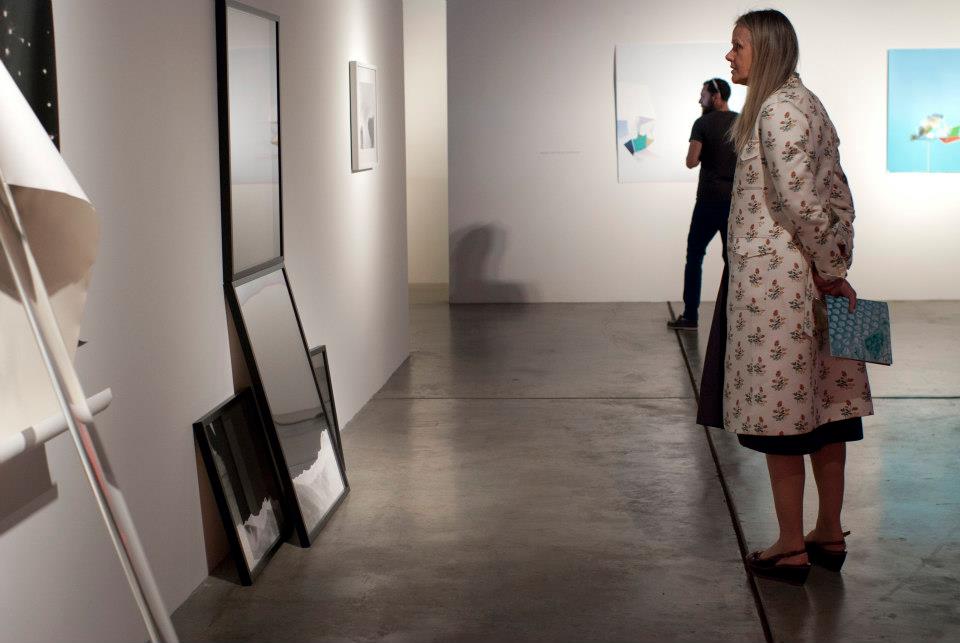
The audience that was privy to the unveiling of this MFA work at Disjecta was, itself, quite noteworthy. Disjecta is warmly embraced, salon-like by the blissfully dernier cri art and cultural partisans of the region and has a sort of vanguardesque following of Portland’s vibrantly artistically active and aware. Along with this is the casual observation that Disjecta is clearly beloved by a youthful urbane population which always helps to solidify an invaluable bohemian-like sophistication let alone reverence. Not only is the venue sort of an “it” place for art seekers and voyeurs of the creative, it is, of course, frequented by some of the regions most respected gallerists and curators. The May 3rd opening was no exception as the MFA exhibitors conversed with attendees such as Jane Bebee of PDX Contemporary and Daniel Peabody director of Elizabeth Leach Gallery, among others.
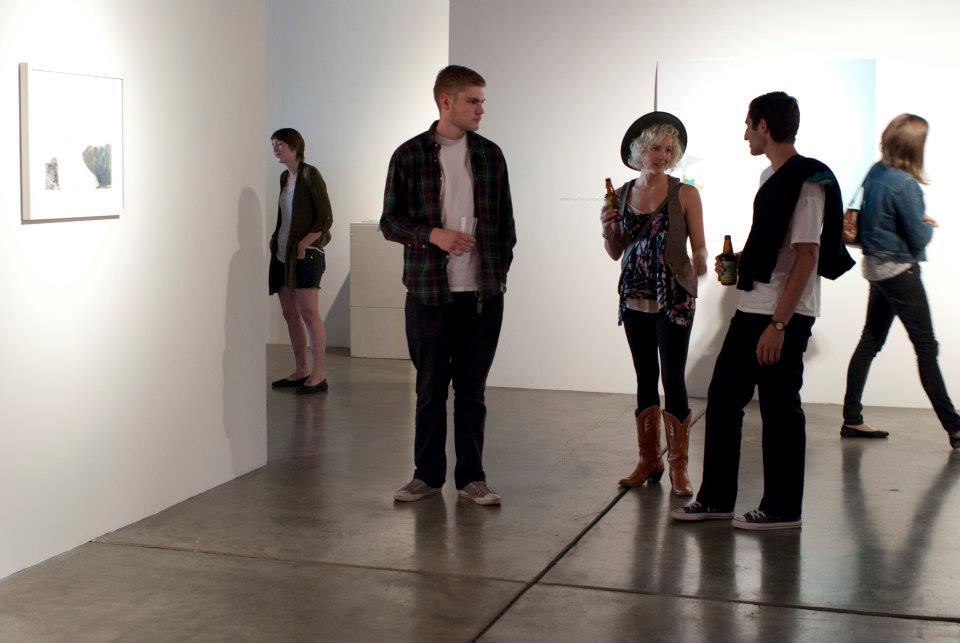
Student Meg Branlund describes the opening reception and the audience at Disjecta:
It was an overwhelming experience, in the best way. Between the preview reception for friends and family, and the public reception . . . I enjoyed every minute. It was great to see the breadth of visitors at the opening, being able to interact with people from the University, Eugene and Portland art communities that I recognized, and having the opportunity to meet new people and chat about the work and the exhibition overall was great. It really was a perfect evening to enjoy what felt like the culminating event of my career as a Masters candidate.
As the show nears its May 26th closing date, and the Master of Fine Arts candidates complete their final days in the graduate program, the sense of having successfully introduced this group to a receptive audience and a welcoming community exhales with a quiet breath of accomplishment. As MFA candidate Clark explains, “The Department of Art offers tremendous support for us, not only during the process of organizing this exhibition, but during our entire time in the program. It’s really a great place and the people here are incredible.” It has been a good, a very good, few years.
Taking the work and the experience, or considering “the entire time in the program,” Oregon Artswatch Collier profoundly informs us that
Being an artist first requires that one is paying close attention to the world at large and this includes the recent history of art that we would call “contemporary.” What one does with that information is what distinguishes one artist from another.
Indeed, if we are to believe Camille Paglia (“How Capitalism Can Save Art”) part of the salvation, or rather the success of up and coming artists lies in a keenly developed understanding and ability to work within the confines and liberties afforded by a capitalistic, market-oriented society. Paglia confronts us with the query, “Does art have a future” and progresses to “What do contemporary artists have to say and to whom are they saying it?” Lamenting that “too many artists have lost touch with the general audience and have retreated to an airless echo chamber,” we begin to understand the dynamic and even greater importance of bringing our students out into the world, of delivering them into a place where they can reach an audience, and not “retreat into an airless echo chamber,” but as Collier so aptly pronounced, a place where they can “[pay] close attention.”
With a rather bitter assessment of the young artists emerging today, Paglia might seem to damn the new generations with her comments,
Young people today are avidly immersed in this hyper-technological environment, where their primary aesthetic experiences are derived from beautifully engineered industrial design. Personalized hand-held devices are their letters, diaries, telephones and newspapers, as well as their round-the-clock conduits for music, videos and movies. But there is no spiritual dimension to an iPhone, as there is to great works of art.
Without misplaced hubris, the “Speaking Between” work exhibited at the MFA exhibition confidently seems to translate beyond this condemnation. From the onyx-y dust and flake-like whispers of Meg Branlund’s photographic ash to the azure brilliance of Turchan’s oil-on-paper to the Buddhist inspiration of Nance’s work, we can find a thread of depth that might allude to Paglia’s plea for spirituality. These are individuals who are exploring their universe using means other than just the purely technological: look at Robert Collier Beam’s and Katherine Rondina’s silver gelatin prints; or Emily Crabtree’s swirling surfaces of oil, Aubrey Hillman’s gleaming hardware and mythical constructed elements. Even the videos here are revealing examinations of human experience and psychological conditions, see work by Lenoir, Clark and Kaiser. And, as one can’t help but wonder about the heights reached by Katherine Spinella and her fascination for the disgarded and the repurposed; or be motivated to scrutinize Morgan Rosskopf’s cultural concoctions, we find a plethora of exploration. Even Collier lauds the work and singles out that of Meg Branlund and Micheal Stephen, (“I am always on the look out for stand-outs, whether it be a new or seasoned artist, and I do so within the fringes of the territory that is my own aesthetic taste and narrative….”): and boldly proclaims, “This year it is Meg Branlund for her phenomenological investigation of photography and Michael Stephen for his stunning command of the space allotted him in the gallery;” we are invited into a place where these emerging creatives present to us something meaningful, mindful, observant of their world.
The 2013 MFA artists, carefully taught and guided by the outstanding efforts of the faculty of the UO Department of Art seem to be propelled beyond the dismal prediction of Paglia’s. May we be honored to say that perhaps the introduction of their work into the capitalist metropolis of the city of Portland and their time in Eugene, both places rife with lucrative and successful galleries, bursting with all aspects of a society complete with those able to purchase and those able to look and, without a doubt, those willing and able to appreciate, to curate, to critique, to write and to report—our region is rich in offering opportunity for integration and recognition. It is with opportunity and exposure that exhibitions like this at Disjecta will assist in encouraging our graduates into a marketplace where to be a part of an economy and to live in and contribute to that market will play a key role in their assimilation into the art world. Perhaps in some significant way with the “UO’s Art Department faculty [who have] sufficiently prepared their students for the next step in their education, which is to make art on their own and thereby continue the conversation with a larger audience. . . .” (P Collier) will with the carefully planned introduction of the student work to Northwest audiences spawn many experiences for these MFA candidates in a marketplace, and in an arts-loving region.
And that is, certainly, art and artists with a future.
View images at the finish of this blog post and from the opening reception of Speaking Between, on Facebook.
The 2013 MFA Students are,

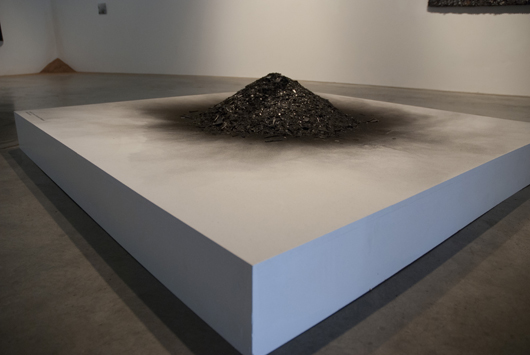
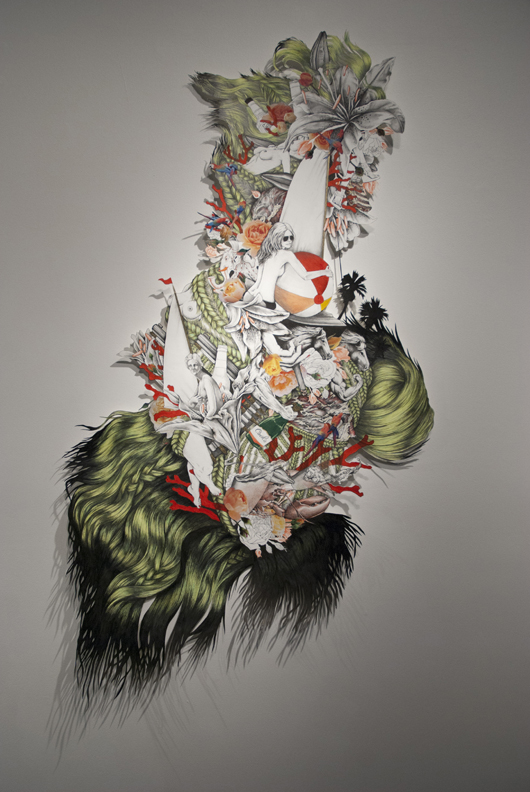






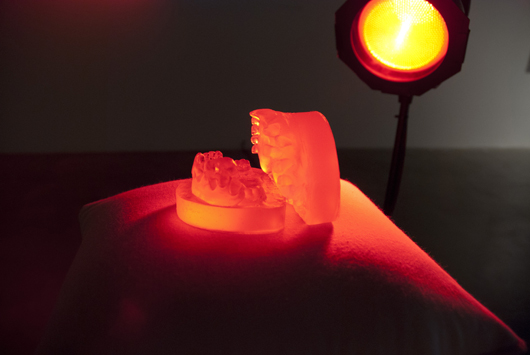

Sources:
